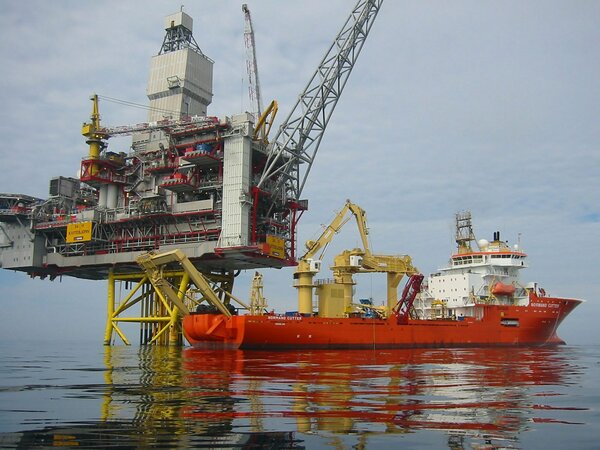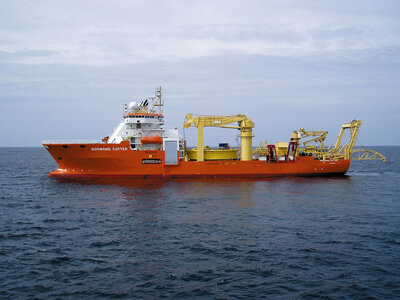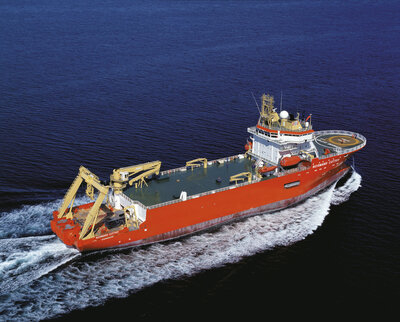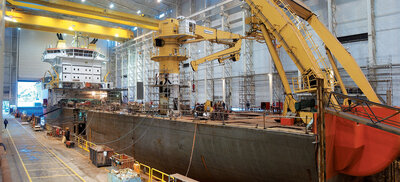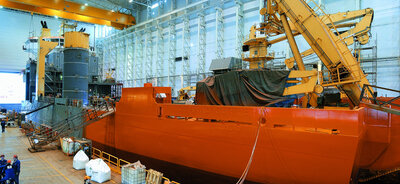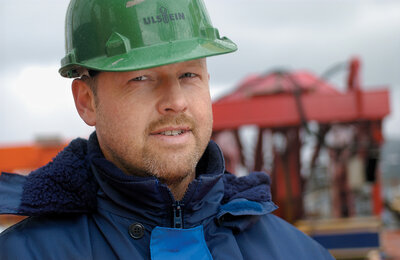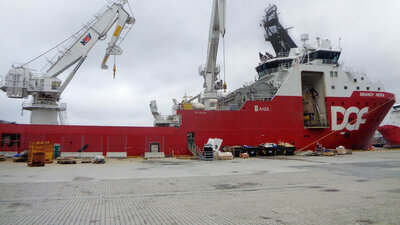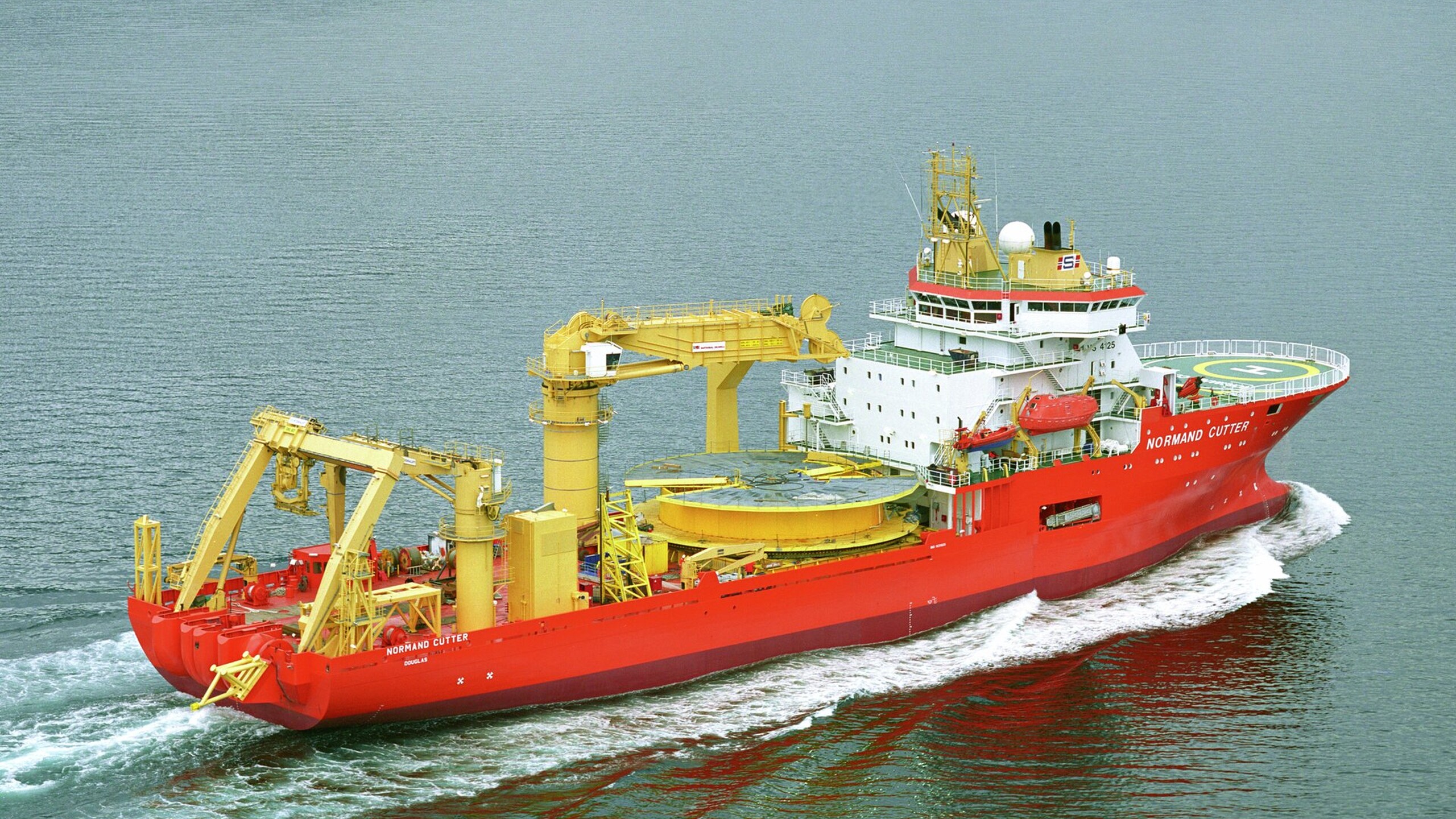On 5th December 2003, the cable-laying vessel Normand Cutter arrived at Ulstein Verft in Ulsteinvik, Norway. In May, some six months later, the new pipe-laying and construction vessel Normand Cutter left the shipyard. "Given what I know of our organisation, I had no doubt that we would get the job done. This extensive conversion was carried out in a very short time, thanks to the fantastic efforts made by everyone involved in the production, construction and project management," says Roar Riise.
A WHOLE "NEW" VESSEL
Normand Cutter underwent a metamorphosis: "No less than 1,300 tonnes of new steel were to be added to the vessel. Ulstein Verft's department in Vanylven, Norway, the Maritim Ltd. yard in Poland, and Salthammer Båtbyggeri in Vestnes, Norway, were engaged in constructing the steel sections to expedite delivery to Ulstein Verft. The sections were used for the side tanks, base of the crane, new living module and ROV hangars," says Riise.
THE CRANE DOMINATES
"The most important part of the conversion was installing the 300-tonne crane on the port side. It is an active heave-compensating crane. A new distribution room that provides electricity for the crane was also installed," says the Project Manager. A 300-tonne winch is connected to the crane below deck, and the hydraulic generator for the crane, the so-called 'power pack', produces 4,400 kW. The 25-tonne crane already installed on the vessel has been moved from the port side to the starboard side and upgraded with a new, larger winch. According to Normand Cutter's Captain, Geir Ove Olsen, the vessel now leans seven degrees when the largest crane is swung over the ship´s side.
"Side tanks, so-called compensators, were installed in the vessel to compensate for this. The vessel is now 3.6 metres wider from the stern to the bridge than it was before," says Superintendent Interior & Outfitting, Marton Voldsund.
THE VESSEL HAD TO BE STRENGTHENED FOR DECK LOADS
One real challenge was the fore and aft strength: "With new requirements regarding extra deck loads, the load deck had to be strengthened to bear 10 tons per m2 for a total length of 60 metres. The basic hull was previously designed for 3 tons per m2. This job was demanding, partly because access was difficult. The main deck was strengthened, and the distance between ribs was halved; the lower decks were also strengthened. The technical part of the work was solved with good help from Det Norske Veritas," says Johan Moldskred, Superintendent Hull&Steel Structure.
CAN CARRY OUT UNDERWATER OPERATIONS
A moon-pool, a well for underwater operations, has been introduced straight through the vessel. The vessel is classified for Dynamic Positioning, DYNPOS AUTR, and has powerful thrusters and motors to be able to perform DP operations. "The DP controls have been moved to the aft bridge, and a new manoeuvring chair and controls have been installed in the aft bridge. Three new ROV stations have been installed: one on each side of the aftdeck and the third behind the bridge, where a separate hangar has been constructed," Marton Voldsund says.
CAROUSEL FOR UMBILICAL
Given the widening of the vessel, there was room on deck for an extensive pipe carousel with a capacity of 2,500 tonnes of pipes. "The carousel rotates at a speed of 600 metres per hour, and the umbilical is slowed down around the drum. The umbilical provides underwater platforms with everything they need," says the Captain. A pipeline that runs over the deck and back over the stern guides the umbilical into the sea.
ROOM FOR MORE PEOPLE ON BOARD
Normand Cutter can now take on a variety of demanding jobs, jobs that can require a lot of people. This meant expanding the on-board living quarters. New living modules with cabins and offices were installed, and the vessel can now carry 114 people, up from 70 previously. New air conditioning also had to be installed as part of this upgrade.
A PLEASURE BEING PROJECT MANAGER
All of this work took just six months: "There have been some minor delays along the way, but we have caught up again. It has been a pleasure being the Project Manager for this project group. Our employer, Solstad, has incredibly flexible, capable people at all levels, and I look forward to working with them on other projects in the future," says Roar Riise.
After conversion, the Normand Cutter went straight into a series of assignments
The sister vessel, 'Normand Clipper', went through a similar conversion at Ulstein Verft shortly after the 'Normand Cutter' project.
